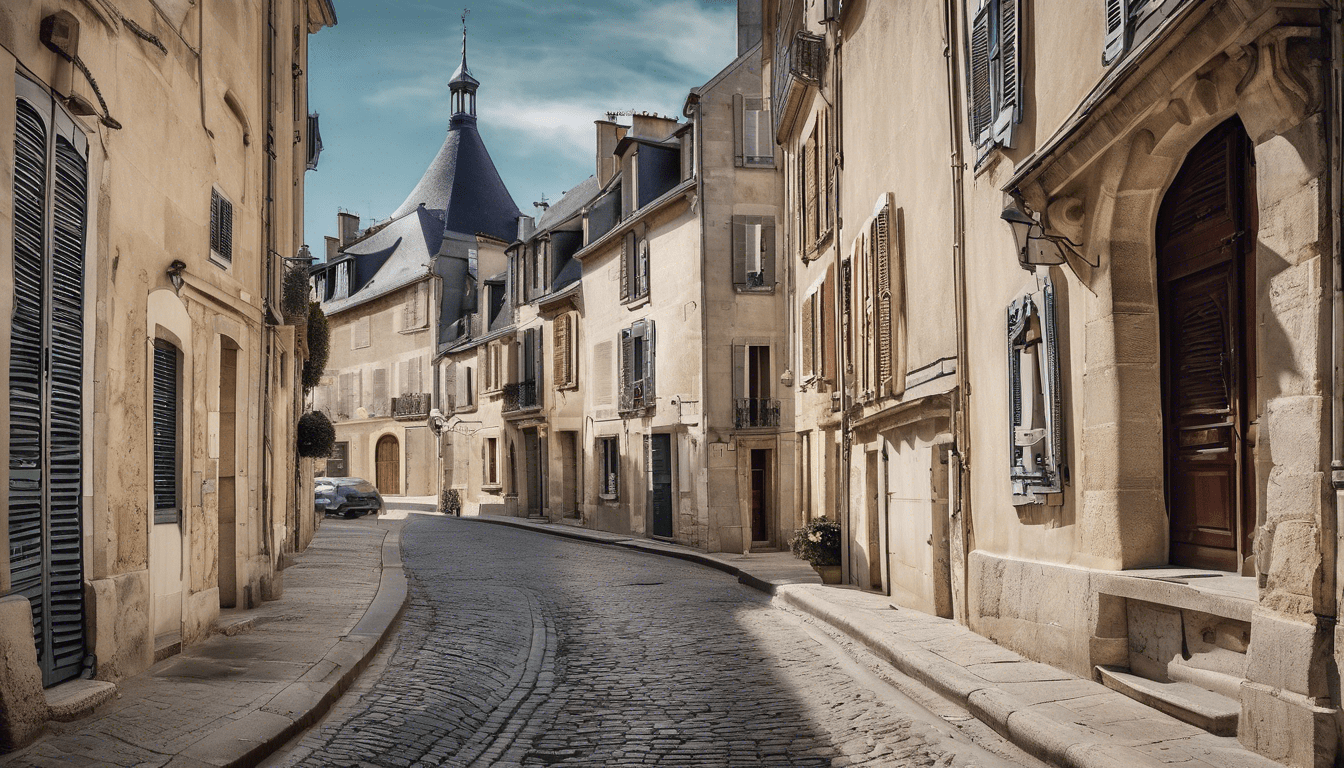France’s regions offer a tapestry of diverse landscapes, historic sites, and vibrant cultures. Planning for 2025 involves understanding evolving travel trends, from sustainable tourism to off-the-beaten-path adventures. This guide provides a comprehensive outlook on key destinations, local experiences, and practical tips, helping travelers craft enriching journeys. Embracing regional uniqueness ensures memorable explorations that align with future trends, making 2025 the year to discover France’s hidden gems and timeless treasures.
Overview of France’s Regional Destinations
France’s regions present a remarkable diversity that captivates travelers year-round. From the sun-soaked coasts of Provence-Alpes-Côte d’Azur to the lush vineyards of Bordeaux, each region offers unique features worth exploring. The northern region of Normandy, with its rich history and dramatic cliffs, stands in contrast to the alpine adventure opportunities in Auvergne-Rhône-Alpes. This diversity demands thoughtful regional planning to maximize the travel experience in 2025.
Topic to read : Discover france: a 2025 travel guide to regions and beyond
Planning a trip with regional destinations in mind allows visitors to appreciate not only the famous landmarks but also hidden gems that define each area’s character. For example, the historic villages in Occitanie offer cultural richness that complements the bustling urban charm of Île-de-France. As travelers aim to explore beyond major cities, understanding and leveraging these regional distinctions becomes vital.
Travel trends for 2025 emphasize sustainable tourism and deeper cultural immersion, encouraging visits to less crowded destinations across regions. Expectations show a growing interest in culinary experiences, outdoor activities, and heritage tours, which align naturally with the strengths of France’s distinct regions. Knowing how each region caters to these trends helps in tailoring travel plans that are rewarding and respectful to local environments and communities.
This might interest you : Discover London’s Secret Past: Exclusive Access to Underground Bunker Tours Awaits!
For an in-depth practical guide to France’s regional travel opportunities and planning for 2025, visit https://culturefrancia.com/en/. This resource provides a comprehensive look at destinations, travel tips, and insightful trends to enhance your exploration.
Major Tourist Regions in France
Exploring France’s diverse tourist regions offers a rich blend of culture, history, and natural beauty, appealing to a wide range of travelers in 2025.
Paris and Île-de-France
Paris, the heart of the Île-de-France region, remains an irresistible destination with iconic landmarks such as the Eiffel Tower, the Louvre Museum, and Notre-Dame Cathedral. For urban exploration in 2025, travelers should consider visiting during spring or early autumn to avoid peak tourist crowds and enjoy pleasant weather. Seasonal events like art exhibitions and open-air concerts add extra appeal. Efficient public transport and walking-friendly neighborhoods make navigating Paris straightforward, helping visitors make the most of their stay in this bustling region.
Provence-Alpes-Côte d’Azur
The Provence-Alpes-Côte d’Azur region dazzles with the French Riviera’s glamour, fragrant lavender fields, and charming historic towns like Avignon and Aix-en-Provence. Festivals play a vital role here, with events like the Cannes Film Festival occurring annually. The best time to visit in 2025 is late spring or early summer to combine ideal weather with festive atmospheres. Travelers can savor the local cuisine and unwind along the Mediterranean coast, enjoying both cultural richness and natural splendor.
Normandy and Brittany
Normandy and Brittany offer a powerful dose of history and dramatic landscapes. Key sights include the solemn D-Day beaches, the majestic Mont Saint-Michel, and the rugged Breton coastlines. For travelers seeking cultural immersion, these regions provide authentic experiences through local markets and traditional cuisine centered on seafood and cider. Visiting in late spring ensures mild weather and fewer crowds, facilitating meaningful exploration of wartime history and natural beauty.
The Loire Valley and Central France
The Loire Valley, famed for its castles and sprawling vineyards, showcases UNESCO World Heritage sites that captivate history and wine enthusiasts alike. Central France’s pastoral charm complements castle tours with opportunities to sample regional wines and local gastronomy. Suggested itineraries in 2025 include guided tours of châteaux combined with vineyard visits, ideally during summer when gardens bloom and wineries are in full swing.
The French Alps and Pyrénées
For outdoor enthusiasts, the French Alps and Pyrénées provide thrilling options, from skiing in winter to hiking and scenic drives in warmer months. The 2025 travel season calls for planning based on activity preferences: winter for ski resorts and après-ski culture, summer for exploring alpine trails and lakes. These regions balance natural majesty with vibrant mountain villages offering cultural festivals and regional dishes, making them a versatile choice for all-season visits.
For further comprehensive travel insights into France’s diverse regions, visit https://culturefrancia.com/en/.
Unique Regional Experiences and Activities
Explore wine and gastronomy tours in Bordeaux and Burgundy to taste some of France’s finest wines and indulge in regional culinary delights. Bordeaux boasts top wineries such as Château Margaux and Château Lafite Rothschild, where visitors can enjoy cellar tours and tastings. Burgundy offers specialties like coq au vin and escargots, paired with exquisite Pinot Noir and Chardonnay. For 2025, it is advisable to book tours well in advance, as these popular destinations tend to fill quickly, especially during harvest season.
Coastal and beach vacations on the French Riviera provide an ideal summer escape. The best beaches include the pebbled shores of Nice, the sandy stretches of Cannes, and the luxurious vibe of Saint-Tropez. In addition to sunbathing and swimming, visitors can experience seaside resorts offering a blend of relaxation and vibrant nightlife. For off-season travel in 2025, consider visiting during spring or autumn when the weather remains pleasant, and crowds are fewer. This allows for a more serene coastal experience without sacrificing comfort.
Cultural and historical tours in Strasbourg and Lyon immerse travelers in rich heritage and vibrant festivals. Strasbourg’s mix of French and German influences is evident in its architecture and museums, such as the Strasbourg Museum of Modern and Contemporary Art. Lyon, recognized as the gastronomic capital of France, offers UNESCO World Heritage sites and lively local festivals like the Fête des Lumières. For immersive cultural experiences, guided tours often provide valuable context, enhancing understanding of these cities’ historic significance and local traditions.
Adventure tourism in the Alps and Pyrenees includes diverse options like hiking, skiing, and mountain biking. The Alps offer world-renowned ski resorts such as Chamonix and Val d’Isère, perfect for winter sports enthusiasts. The Pyrenees provide excellent hiking trails with panoramic views and mountain biking routes that cater to various skill levels. When planning activities for 2025, safety tips include checking weather conditions, using proper equipment, and hiring certified guides for unfamiliar terrains, ensuring a secure and enjoyable adventure.
For a comprehensive travel overview to these and other regions, visit https://culturefrancia.com/en/.
Essential Travel Tips for Visiting France in 2025
Traveling to France in 2025 requires awareness of the most recent entry requirements and travel restrictions. As regulations may evolve, visitors should verify the necessity of visas or health documents before arrival. Generally, travelers from many countries can enter with a valid passport, but checking specific requirements based on nationality remains crucial to avoid last-minute issues.
For getting around, train travel offers a fast, comfortable, and scenic way to explore France’s diverse regions. The high-speed TGV network connects major cities like Paris, Lyon, and Marseille efficiently. Renting a car is ideal for those who want to visit rural areas or less accessible destinations; however, driving in city centers can be challenging due to traffic and parking constraints. Local transit options—including metros, buses, and trams—are reliable in urban areas, ensuring travelers can navigate easily without a car.
Currency in France is the euro (€), and while credit cards are widely accepted, carrying some cash for smaller purchases or markets is advisable. English-speaking locals are common in tourist zones, but learning basic French phrases enhances communication and shows respect for local culture. Using translation apps or phrasebooks can further ease conversations.
Budget-conscious travelers should plan and book well in advance, especially for peak tourist seasons like summer and holiday periods. Early reservations for accommodations and attractions not only secure better prices but also prevent sold-out disappointments. Monitoring updated health protocols and COVID-19 measures remains important; although restrictions have lessened, masks and sanitization might still be recommended at certain venues or on public transport.
For detailed regional insights and planning resources, travelers are encouraged to visit https://culturefrancia.com/en/. This site offers comprehensive guides aligning with contemporary travel conditions in 2025, helping visitors make informed and enjoyable choices.
Visual Resources and Interactive Planning Tools
Explore a wealth of visual resources designed to enhance your 2025 travels across France. Detailed maps of key regions and routes provide clear navigation, helping you plan efficient and enjoyable journeys. These maps highlight major cities, scenic drives, and cultural hubs, making it easier to select destinations that suit your interests.
Image galleries offer vivid glimpses of must-see sites and hidden gems. From breathtaking coastlines to quaint villages, these galleries bring destinations to life, allowing you to visualize what awaits. They serve as an inspiring tool to spark ideas and clarify your travel goals.
Interactive planning tools include dynamic itinerary builders that enable customization according to your preferences. You can arrange stops, estimate travel times, and optimize routes, ensuring your travel plans are both practical and exciting. Visualization tools transform your itineraries into engaging maps, making adjustments intuitive and straightforward.
Local event calendars and seasonal activity guides keep you informed about festivals, exhibitions, and outdoor activities scheduled throughout 2025. These resources enable you to align your trip with unique cultural experiences, providing a deeper connection to each region you visit.
Together, these visual and interactive tools empower travel enthusiasts to design memorable and well-organized adventures. For further inspiration and comprehensive planning assistance, consider exploring https://culturefrancia.com/en/, a resource that showcases diverse aspects of French culture and travel.
Future Trends and Expectations for French Regional Tourism in 2025
French regional tourism in 2025 is set to evolve significantly with a strong emphasis on sustainable tourism initiatives. Travelers increasingly prefer eco-friendly travel options, leading to a rise in green accommodations and low-impact activities that prioritize environmental preservation. This trend not only helps protect France’s diverse landscapes but also meets the growing demand for responsible tourism experiences.
Another key development is the adoption of digital innovations. Virtual tours are becoming more sophisticated, allowing potential visitors to explore destinations remotely before deciding to travel. Mobile booking apps simplify trip planning with seamless access to transportation schedules, accommodations, and local activity bookings. These technologies enhance convenience while personalizing travel experiences, making regional tourism more accessible to a broader audience.
In addition, 2025 will likely see a strategic focus on expanding tourism beyond traditional hotspots. Promotion of lesser-known regions encourages off-the-beaten-path discoveries, offering unique cultural and natural attractions. This not only disperses visitor traffic more evenly across France but also supports regional economies and preserves popular destinations from overtourism.
Global events continue to impact tourism policies and visitor patterns. In 2025, fluctuations in international travel regulations, economic shifts, and evolving health protocols will influence how tourists plan their visits. French regional tourism authorities remain adaptive, balancing safety concerns with the desire to attract visitors, ensuring resilient and sustainable growth in the sector.





